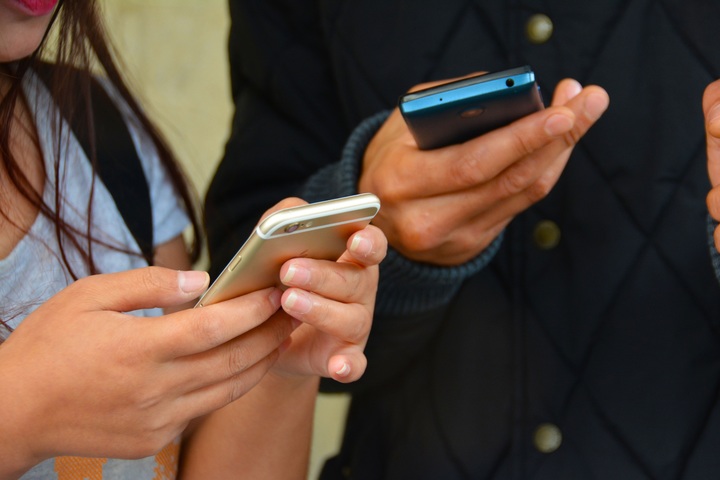
By Pamela Cruz. Peninsula 360 Press [P360P].
Advances in technology, confinement due to the pandemic, and the increasing use of technological devices have made musculoskeletal injuries increasingly common.
According to Mauricio Ravelo Izquierdo, an academic at the National Autonomous University of Mexico (UNAM), the Quervain's tendonitis and text neck or neck pain from texting, which due to the discomfort and inflammation they cause can be extremely disabling.
He explained that the first symptom is mild pain, which if left unattended can become intense, to the point of immobilizing the inflamed area and cause an increase in temperature and discoloration.
In the case of the hand, the discomfort can go from the thumb to the middle part of the forearm, and in the neck from the nape of the neck to the back of the shoulders; in some cases it causes lesions in the nerve endings that emerge from the cervical spine.
Quervain's disease, said the professor of the degree in Physical Therapy, is an injury that occurs basically by inflammation of two tendons that go to the thumb: the extensor pollicis brevis and abductor longus.
However, he said, these conditions can be avoided if the cell phone is used wisely: for periods no longer than 30 minutes, and leave it aside for at least an hour and a half to rest the hand and neck.
For her part, Dr. Tamara Rozental, an orthopedic surgeon who specializes in hand, wrist and elbow disorders at Harvard-affiliated Beth Israel Deaconess Medical Center, said the repetitive motions of texting and typing can cause widespread hand pain due to underlying osteoarthritis -- the wearing away of cartilage in the joints.
"The use of these devices does not cause osteoarthritis, but if you are prone to osteoarthritis, it can increase your symptoms," the specialist said in an article issued by Harvard Medical School.
He explained that while typing on a laptop or desktop keyboard does not cause carpal tunnel syndrome -- a condition in which the median nerve is compressed as it passes through a small area in the wrist known as the carpal tunnel -- it can highlight symptoms of the condition, such as pain, tingling and numbness in the thumb, index finger, middle finger and inner half of the ring finger.
He added that too much leaning on the elbows can worsen cubital tunnel syndrome, in which the ulnar nerve is compressed where it passes through tissue near the elbow called the cubital tunnel. Symptoms include pain, numbness or tingling in the ring or little finger.
Neck and back pain
Looking at an electronic device for long periods of time can cause neck and back pain.
"You're stretching the muscles, ligaments and tendons in the neck and upper back," explains Dr. Andrew White, an orthopedic surgeon and co-director of the Spine Center at Beth Israel Deaconess Medical Center. "It's the posture and the amount of time in that posture that matters."
The expert stressed that this type of pain is temporary and will not cause permanent back or neck problems. "But it's uncomfortable and can also irritate the occipital nerve where the spine connects to the base of the skull, which can cause headaches.
Hand and wrist corrections
Treatments for hand or wrist conditions include taking a break from offensive activity; splinting; short-term use of over-the-counter pain relievers, such as ibuprofen (Advil) or acetaminophen (Tylenol); exercises to stretch the tendons; and sometimes steroid injections.
The way you use electronic devices will also need to change. If texting with your thumbs causes pain, you may need to use other fingers or a stylus.
"If you have pain or deformity in your hand, use voice commands or use a thicker stylus to put less stress on your thumb joint," Rozental said.
To relieve carpal tunnel pain you should set up your workstation so that your forearms are parallel to the floor, your wrists are straight and in line with your forearms, and your elbows are relaxed and bent at a 90-degree angle at your waist.
"Using a vertical mouse puts your hand in a less stressful position. And keep the mouse in front of you, not to the side," suggests the expert.
Back and neck corrections
To alleviate back and neck pain, posture should be adjusted when using a device. "Keep your gaze parallel to the floor instead of down," suggests Dr. White.
It's helpful to raise your computer monitor so it's at eye level. And you can do the same with handheld devices by propping them up on pillows.
It also urges you to prevent pain by exercising and strengthening the core muscles that support the spine.
"If you're in good physical shape," Dr. White stressed, "it's been shown that you're less likely to develop neck or back pain."


